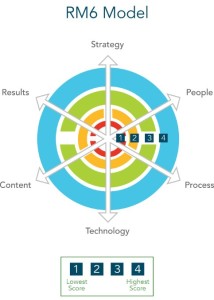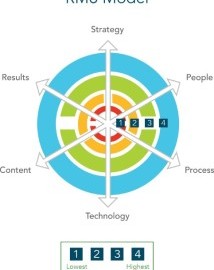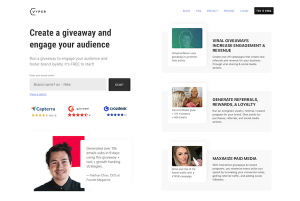In this three-part series, I examine the six keys of building and growing a thriving Revenue Marketing practice – strategy, content, people, process, technology and results. In Part One, I talked about Strategy and Content and Part Two covered People and Process . In today’s final installment, I’ll addresses Technology and Results.
The Fundamentals: Marketing Automation And CRM
Technology, more specifically marketing automation integrated with CRM, is the foundation for any Revenue Marketing practice. These tools provide the ability to track and report on real revenue contribution from marketing.
More broadly, many marketing departments use multiple systems to run marketing. I was recently working in one large company, and we quit counting how many systems marketing was using at 22! Clearly, this is too many to be effective.
It is critical, especially in larger organizations, that the entire revenue marketing architecture is reviewed and optimized. What is the purpose of each system? How does data flow from one system to the other? What needs to change in each system once these data flows are optimized? Who do these changes impact and how will they be trained? Who will update and administer the system architecture? In other words, what is the optimal set of technologies and how are they best optimized to deliver an optimal revenue marketing result?
Revenue Marketing Operations
Answering all of these questions points to the potential need for a separate revenue marketing operations group with the goal to optimize marketing effectiveness with leading edge technology, optimized processes, clean and current data, and rigorous analysis. Within this revenue marketing operations group key functions include marketing technology management, data management, process optimization, reporting/analysis/strategy and marketing automation power users/admins.
Managing this much technology is often a challenge for marketing and thus requires either the hiring of technical skills or a good working relationship with IT. One thing is clear for marketing: Technology is now the enabler; just as CRM spawned the rise of sales operations, marketing automation and other tools are doing the same for marketing operations.
Results: What Gets Measured, Gets Done
In terms of a revenue marketing practice, results are reflected in the metrics that your CEO, CFO, CSO and board care about the most: revenue. For many marketers, making the transition – going from reporting on activities such as number of leads generated to reporting on percentage and dollar amount of the sales funnel sourced by marketing — is a huge transition that goes beyond just acquiring a marketing automation system. For this transition to be successful, there must be a rabid focus on ROI.
To give you an example of the impact that an ROI focus has on results, let’s look a key data point from the recent study from the Lenskold Group and sponsored by the Pedowitz Group — In the study, of the companies using marketing automation and ROI metrics, 69% reported an increase in total marketing revenue contribution. Contrast this with the 19% increase in total marketing revenue contribution reported by users of marketing automation and traditional metrics.
This data points out that investing in marketing automation is the first step, but the more important step is focus on ROI in order to make a substantial contribution to top-line revenue.
The Revenue Marketing Funnel
In order to achieve and report on key revenue metrics, marketers must develop and manage a revenue marketing funnel. Just like a sales funnel, the marketing funnel establishes the rate of conversion from one stage of the funnel to the next. The end-game here is to become so accurate on these conversion metrics that marketing can forecast the upcoming impact on revenue.
The ability to drive repeatable, predictable and scalable revenue contribution is the hallmark of the Revenue Marketer. And now, it can be done thanks to marketing automation technologies.
Reporting Dashboards And Cadence
Developing dashboards in a revenue marketing model takes on two distinct flavors – one to help run the day to day practice and one for reporting to senior management.
Day to day dashboards usually include lots of data and will report on metrics such as open rate, click-through rate, bounce rate, form conversion rate, number of MQLs sent to sales and percentage of conversions of MQL to opportunity — all broken down by lead source and all key metrics the team needs to work to optimize. These metrics are reviewed in real-time and as part of a thorough continuous improvement program.
Dashboards for senior management include far fewer but more highly focused revenue metrics such as percentage of sales pipeline sourced by marketing, dollar amount of sales pipeline sourced by marketing, percentage of closed business sourced by marketing and dollar amount of revenue sourced by marketing. The best case is that the executive dashboards are available 24×7, and the next best case is that the dashboard is an automated report that can be generated at any time.
Clearly there is a huge correlation between results and technology in that technology is the enabler to drive a real revenue result from marketing. Once marketing can get comfortable with using technology as a business driver and applying an ROI focus to marketing, revenue results begin to happen.
The transformation of marketing from a cost center to a revenue center is a complex initiative that requires a holistic approach across all six elements of strategy, content, people, process, technology and results. There is no silver bullet, but marketing organizations that approach this transformation as a journey, rather than as an event, will become true Revenue Marketers.
Business Articles | Business 2 Community
(354)
Report Post







